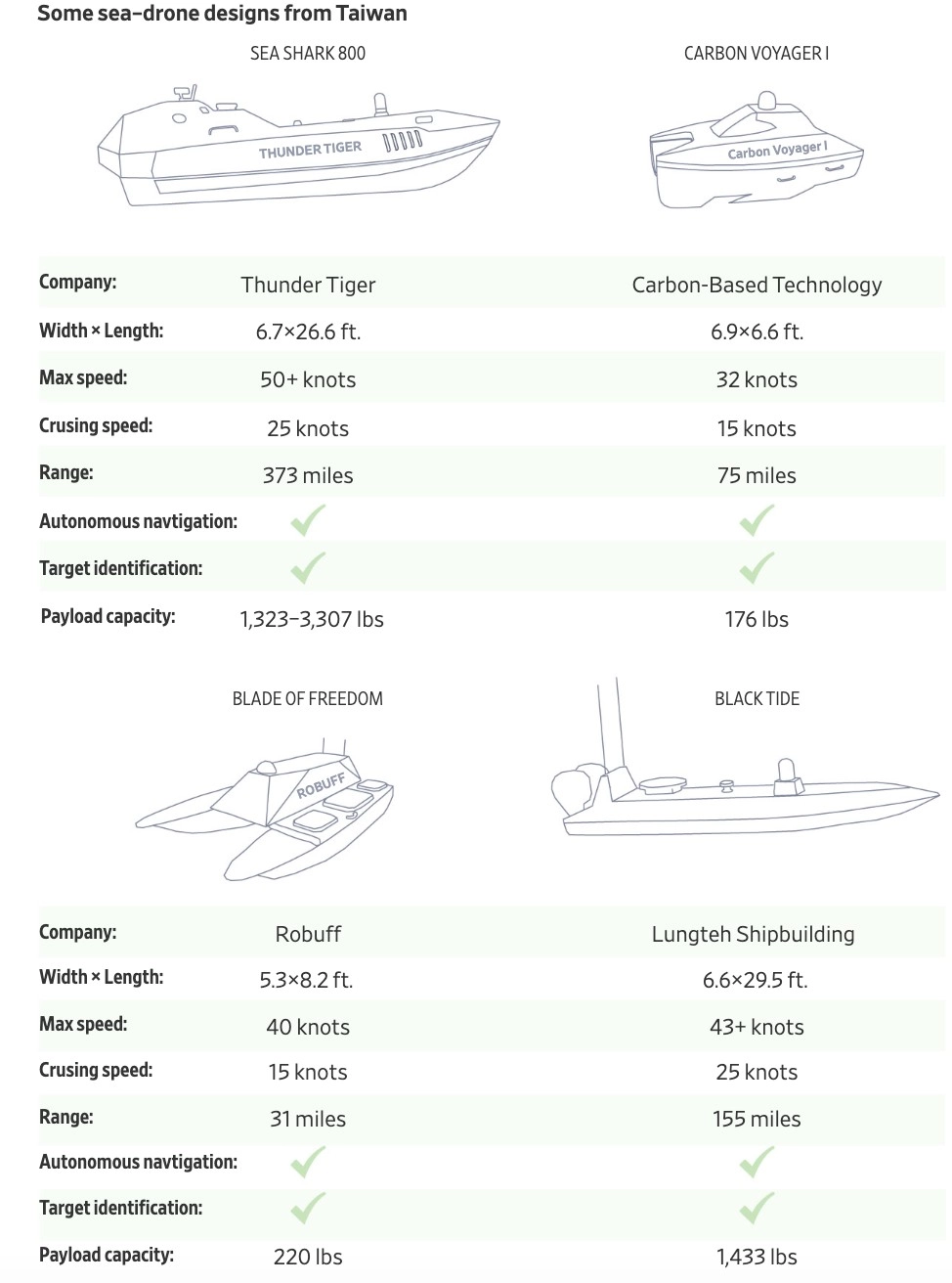By Joyu Wang Updated June 28, 2025 12:01 am ET
Defense Secretary Pete Hegseth said China’s threat to Taiwan ‘could be imminent,’ in what was his most assertive statement to date on Taiwan during a security conference in Singapore. Photo: Ore Huiying/Bloomberg News
SUAO, Taiwan—Taiwan is accelerating efforts to develop a high-tech fleet of naval drones that military planners see as a potential game-changer in the island’s ability to fend off a possible Chinese invasion.Drones are transforming warfare and spurring military strategists to rethink long-held assumptions about defense. Both Ukraine and Israel have used drones to devastating effect in recent weeks.For Taiwan, Ukraine’s success in using sea drones to erode Russia’s naval superiority in the Black Sea offers the possibility that the weapons could be used to establish supremacy over the Taiwan Strait and hold off an amphibious attack by China.
Taiwan plans to begin to introduce sea drones to its naval forces this year, Defense Minister Wellington Koo told The Wall Street Journal in a recent interview, part of preparations for what it sees as a potential invasion by China as soon as 2027.
Some sea–drone designs from Taiwan

Sources: Taiwan’s Ministry of National Defense; the companiesMing Li/WSJ
Ukraine’s example “could be adapted to the advantage of Taiwan to prevent amphibious ships, other ships, from actually attacking Taiwan,” said retired Adm. Dennis Blair, a former head of the U.S. Pacific Command.
“Even if those opposing forces have much more air power, more missiles, a smaller country with imaginative tactics and with the kinds of new systems that are available can stop them cold,” Blair said.Taiwan could use sea drones lying in ambush along shipping routes as an effective deterrent, said Chen Po-hung, a drone expert and board member of the nongovernment group TTRDA, which focuses on security issues.
Taiwan’s new emphasis on sea drones is part of a defense strategy that aims to show Beijing that an invasion would be too costly to undertake. Beijing hasn’t ruled out the use of force to seize the self-ruled island, which it considers to be part of its territory.
On Taiwan’s northeastern seacoast, a dozen local and U.S. companies showed off cutting-edge technology last week at a sea-drone exhibition that brought life to that goal—and the substantial hurdles to achieving it.
Displays included U.S.-based Ocean Aero’s autonomous surface vessel that transforms into a submarine and an artificial-intelligence-powered targeting system from the company Auterion, designed to deploy swarms of drones, that has been used in Ukraine’s fight against Russia.
In nearby waters, three Taiwan-built drones performed, rapidly accelerating and zigzagging to avoid imagined attacks, their maneuvers displayed on a large screen in the exhibit hall.
“Taiwan could do a tremendous amount of damage” with a mix of drones that can attack, surveil and operate underwater, said Stacie Pettyjohn, a senior fellow and director of the Defense Program at the Center for a New American Security.
“Swarms of these drone boats coming out would be very effective at making it incredibly challenging to conduct an amphibious assault, especially given Taiwan’s geography where there are only a handful of beaches that are really conducive to such an operation,” Pettyjohn said.
Sea drones are more than “just filling them with explosives and having them crash into either a ship or maritime infrastructure,” said Scott Savitz, a senior engineer at Rand. Other uses, as seen in mine-clearing developed by the U.S. Navy or Israeli port defense, are also relevant for Taiwan.
Taiwan is working to gain the capability to build large numbers of sea drones and acquire advanced systems to make them effective, an effort also under way in the island’s development of unmanned aerial vehicles.Taiwan has found it difficult to build a domestic aerial drone industry that doesn’t depend on Chinese parts. For sea drones, the primary challenge of building a domestic industry is cost on an island with a relatively small market.Planners aim to kick-start local industry with government funding and contracts, with the U.S. providing expertise to bridge technological gaps. The host of the Suao exhibition, the chief of Taiwan’s military research and development institute, told exhibitors that future military spending would provide for a “massive” procurement of sea drones, provided the equipment makes the grade.




